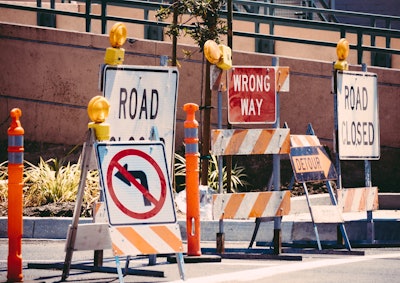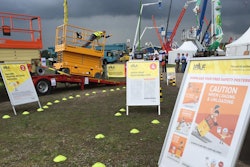
The Texas transportation construction industry, Texas Department of Transportation (TxDOT) and the American Road & Transportation Builders Association (ARTBA) are continuing to work hand-in-hand through the COVID-19 pandemic to improve traffic safety and significantly reduce worker injuries, ARTBA Chairman Steve McGough says.
In August 19 remarks before the virtual Associated General Contractors of Texas (AGCTX) and TxDOT Executive Safety Conference, McGough, the president & CFO of Houston-based HCSS, said ARTBA and Texas organizations have a long history of working together on a host of safety improvement initiatives. This includes implementation of the Safety Certification for Transportation Project Professionals (SCTPP) program, which was launched by 2015-2017 ARTBA Chairman David Zachry, CEO of San Antonio-based Zachry Corporation. The SCTPP aims to aims to significantly boost the hazard awareness and risk management skills of all transportation project professionals. The program is governed by a Certification Commission co-chaired by David Walls, president and CEO of Dallas-based Austin Industries.
The partnership extends to Texas A&M University’s Transportation Institute on the ARTBA-managed National Work Zone Safety Information Clearinghouse, the world’s largest virtual library on information related to roadway work zone safety for 23 years. The university handles the Clearinghouse’s day-to-day website operations.
McGough told participants the commitment to safety never really ends. “Safety is a process, not an achievement. We must continuously look critically at what we are doing and seek improvement – even when we think we are doing well,” he said.
During a panel session with Marc Williams, deputy executive director of TxDOT and Bob Lanham, president of ARTBA-member Williams Brothers Construction, McGough outlined a number of technologies and approaches being used in the state to increase safety for project workers and motorists. Among them:
- Mobile barrier systems that enable positive protection between workers and motorists.
- More smart work zones, particularly for queue warning systems that give drivers advanced warning of traffic back-ups.
- Systems that detect construction vehicle access into and out of workspaces and warn approaching motorists of slower moving construction vehicles.
Of all the traffic control systems and technologies on the market, McGough said speed cameras are a key tool.
“We’ve seen some good, positive outcomes with speed cameras that are effective at getting motorists to comply with posted speed limits,” McGough stated. ARTBA’s guidance document, “Managing Speeds in Work Zones,” shows the presence of traffic law enforcement can yield up to a 15 mph decrease in driver speeding. He encouraged Texas to follow the lead of states that enforce work zone speed limits using cameras such as Maryland, Pennsylvania, and Illinois.
As to how the transportation construction sector is coping with the COVID-19 pandemic, McGough highlighted several activities, including:
- Wearing face masks when social distancing is not possible;
- Improved sanitation on jobsites;
- Reducing the number of workers in vehicles when traveling to jobsites;
- Improved health and sanitary conditions for lunches and breaks;
- Less frequent sharing of tools and sanitizing tools and equipment between shifts;
- Encouraging workers to stay at home when they feel ill and providing compensation benefits when workers are sick; and
- Screening workers before entering the jobsite, work trailers, shops or offices.


















